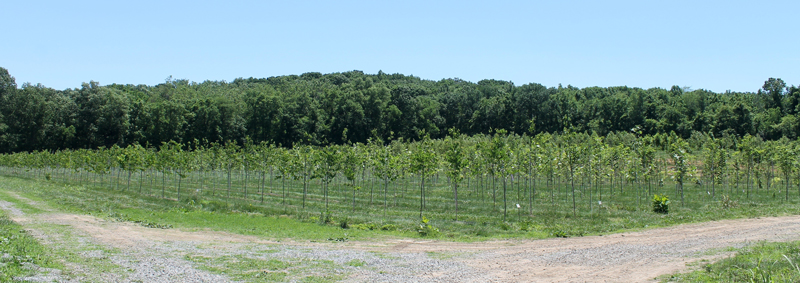THE LEAFLET

Innovative Planting Techniques at the Casey Tree Farm Nursery
Nursery personnel at Casey Tree Farm have been hard at work the last few weeks adding 2,000 trees — three acres worth — to the current nursery.

Roughly 370 of the trees to be planted will be done using two innovative bare-root tree planting techniques — Missouri Gravel Bed (MGB) and root bags — that will limit the amount of stress on the tree during transplantation to future Community Tree Planting (CTP) sites in the District.
Nursery Manager Brian Mayell believes these techniques will improve the tree stock Casey Trees receives for its planting programs.
“Alternative growing techniques such as fabric root bags and irrigated gravel beds will allow Casey Tree Farm to produce trees with much lighter soil balls,” Mayell said, “which are better suited to the volunteer-based tree planting events Casey Trees coordinates.”
Missouri Gravel Bed

Created by Professor Chris Starbuck at the University of Missouri in 1985, the MGB method consists of dormant, bare-root trees that are planted in the spring with their roots in an irrigated planter box — Casey Tree Farm’s is 30 x 30 feet and 16 inches deep — filled with gravel and held for up to a year before planting, in full leaf, in the landscape.
Though not used as a proper growing technique, the MGB method makes handling the trees easier and less problematic because root growth in gravel is fibrous and few roots are damaged when plants are removed from the gravel. Alternatively, balled and burlapped (B&B) trees can lose upwards of 80 percent of their root system when they are prepared for transplantation.
Nursery staff are planting 70 trees in the gravel bed, including cherry, yellowwood, linden, honeylocust, and a variety of oaks and maples. The MGB trees will be planted during the first part of the fall 2012 CTP season, when trees the trees are still in leaf.
Root Bag

Casey Trees mostly uses B&B trees in its planting programs. At 2.5 to 3 inches in circumference, B&B trees weigh hundreds of pounds. This spring’s CTP season included the first root bag trees Casey Trees has planted. Root bag trees from the Farm will be planted through the CTP program within the next five years.
Nursery staff are using 14- and 16-inch root bags. Their weight at the time of transplantation will be significantly less than a B&B tree, ranging from 60 to 80 pounds. Lower weight could make it easier for Casey Trees to plant more trees at a single event or throughout a season.
Bare root trees are planted in felt-like bags filled with soil. As the tree’s roots reach the sides of the bags, they pinch and create nodules that hold valuable carbohydrates that will benefit the tree when it is transplanted. Smaller feeder roots subsequently grow from the nodules. Root bags differ from containerized trees — also light and easy to handle — in that containerized tree roots begin to circle, which is bad for the root system, when they come into contact with the plastic container.
Root bags are easy to grow, transport and plant, which could reap benefits for Casey Trees’ tree planting programs.